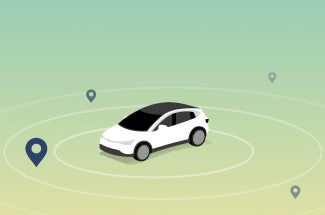Becoming an electric vehicle (EV) driver means getting to know your specific battery. This helps you get the most out of your vehicle’s performance, while extending the life of your charge. It’s all about planning ahead to keep you fully road ready.
1. Check your speed
Driving at a moderate pace conserves battery life. If you find yourself running low on charge, try to take a route that has a slower speed limit. Driving at higher speeds depletes battery life much faster.
2. Avoid full charging
Lithium batteries run best when charged to 80%. This leaves room for regenerative braking which converts kinetic energy into usable energy if there is enough space in the battery.
3. Plan for vacation storage
If you plan to fly, be sure your battery has enough charge for when you return. If parking at the airport, keep in mind that the charge will reduce a little bit each day. Charge your battery as much as possible before leaving or keep your car plugged in while you’re gone to make sure your range is always topped off.
4. Park in the shade
Whenever possible, keep your electric vehicle parked in the shade. This helps prevent the thermal management system under the hood from running more than it needs to and draining the battery.
5. Take more time to charge in the heat
The sun can slow down charging time for lithium-ion batteries. Notice when it’s hot and muggy outside, that’s when you’ll need a little extra time to fill up.
6. Plan your route ahead of time
No matter where you plan to drive, it’s a good idea to know where charging stations are located. For short trips, it’s best to always stay at least moderately charged. This not only helps you fill up faster when you need to, but it also keeps you from getting stuck without power should you find yourself on an extended detour. If you’re going on a lengthy trip, you will need to plan your route carefully to ensure adequate charging stations along the way. Have a backup plan in case the location you choose is out of service or already full. You can check the website PlugShare or download their app to find charging stations along your driving route.
7. Don’t quick charge
Quick-charge settings require more energy. To maintain the longevity of your battery life, use long-charge settings. The difference between quick charging vs. a normal charge rate is compounded over time, which can add up to a few years of additional time before having to replace your battery.
8. Time your charge
The best way to manage your EV charging is by plugging it in during times when you know you won’t need to drive for a few hours. It’s also best not to charge immediately before driving when the battery is considered "hot". Plugging your vehicle in overnight is ideal, and best if you can limit charging to near 80% as mentioned earlier. It helps to have a charger with a timer so that you can estimate when your car will reach an 80% charge. Or your car may allow you to set charging times and charging limits which give you control over both important elements.


